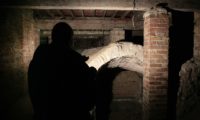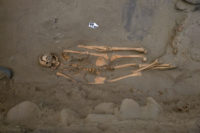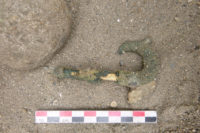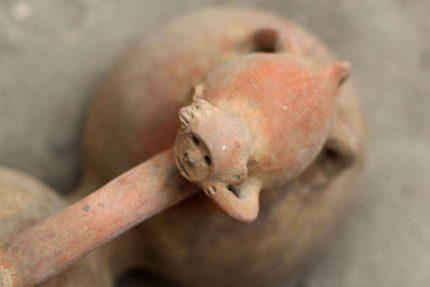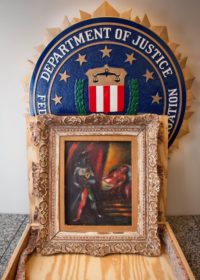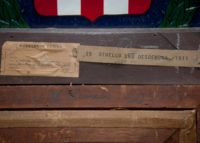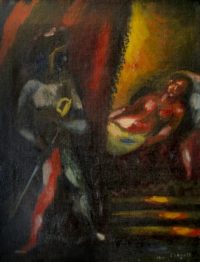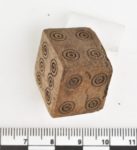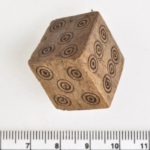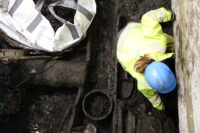The remains of a rare 18th century shipwreck caused much excitement when they were discovered by beachcombers on Ponte Vedra Beach in northeastern Florida last month. All that’s left of the ship is a large section of wooden hull, but 47-feet sections of 300-year-old ships don’t wash up ashore all in one piece very often, and this one is surprisingly well-preserved. Wooden pegs and Roman numeral markers used in its construction are still intact.
Julia Turner and her eight-year-old son stumbled on the wreckage during a walk on the beach on March 28th, 2018. They had been looking for shark teeth and shells when the found a ship’s hull instead. At first Julia thought it was just some old fencing or maybe part of a pier, but she soon realized it was the remnants of a shipwreck.
Archaeologists from the St. Augustine Lighthouse and Maritime Museum started documenting the discovery that very same day. They made field drawings, mapped the hull and its context. Because it was found on state land — Ponte Vedra is a public beach — the shipwreck cannot be moved or interfered with in any way. Even the archaeologists could only observe very carefully, take copious notes to share with any relevant state authorities who would then determine what to do next. The next day, officials decided to attempt recovery, but the heavy crane necessary to remove such a large and heavy section of ship got stuck in the sand. A second attempt on Friday also came to naught.
The news of the find spread quickly and drew crowds, some of whom were a little too keen to get up close and personal with the wreck. The St. Johns County Sheriff’s Office had to deploy a deputy to guard the hull while archaeologists did their thing to keep the overly enthusiastic from interfering with the fragile artifact.
Since archaeologists weren’t officially tasked with salvage and the wreck could be reclaimed by the ocean at any time, the team went with plan B and arranged for a laser scanner to be brought to the site from the University of South Florida. On Saturday, March 31st, four days after the hull washed ashore, it was laser scanned for posterity. Now, barely two weeks later, the first 3D model of the Ponte Vedra Shipwreck has been made available online.
